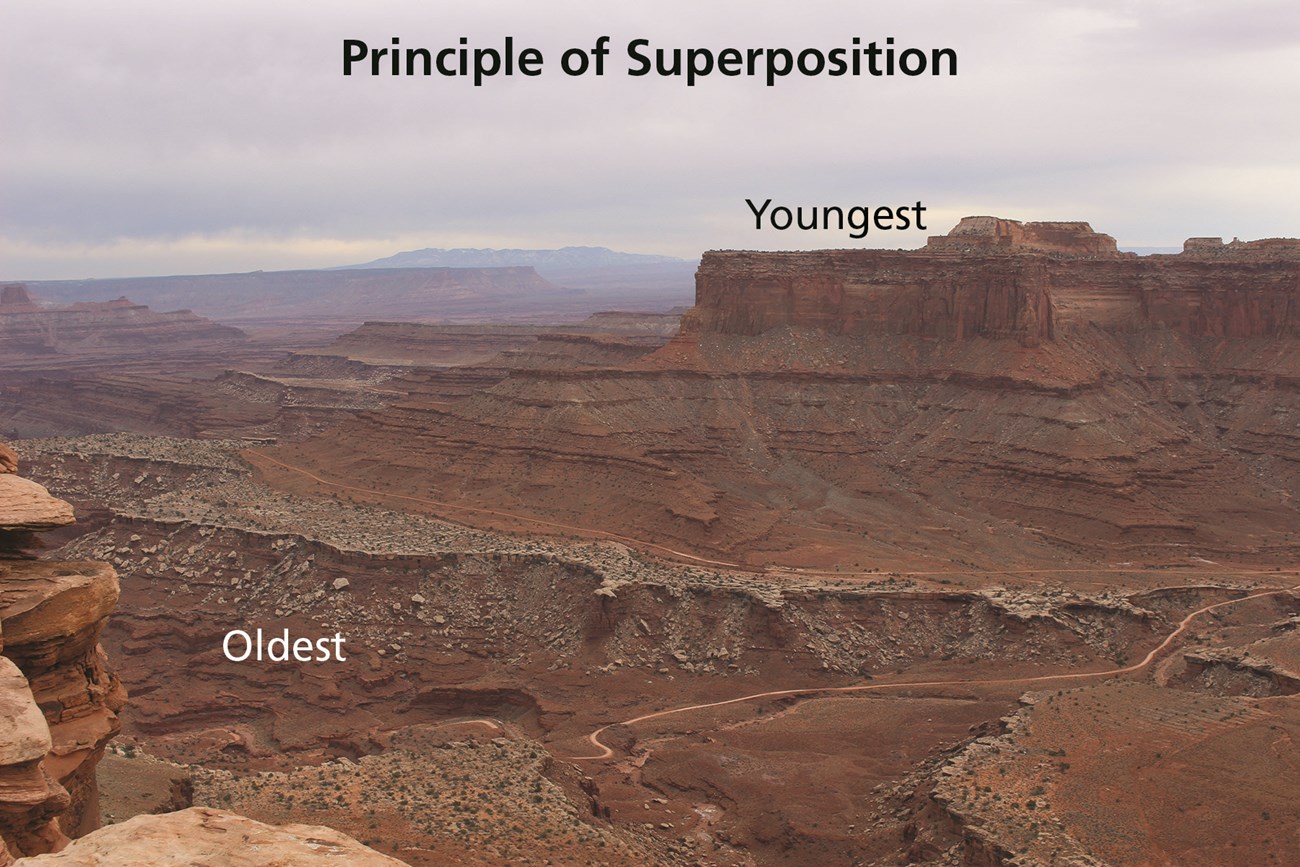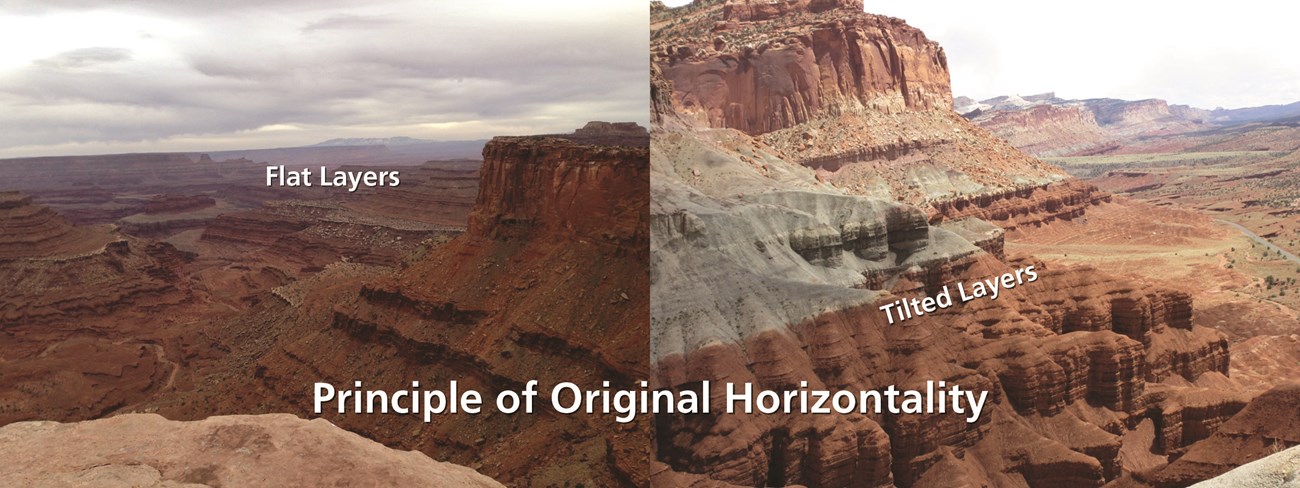Part of a series of articles titled Fundamental Geologic Principles.
Article
Geologic Principles—Superposition and Original Horizontality
Introduction
In 1669 Nicolaus Steno made the first clear statement that strata (layered rocks) show sequential changes, that is, that rocks have histories. From his work in the mountains of western Italy, Steno realized that the principle of superposition in stratified (layered) rocks was the key to linking time to rocks. In short, each layer of sedimentary rock (also called a “bed”) is older than the one above it and younger than the one below it.
Superposition
Steno’s seemingly simple rule of superposition has come to be the most basic principle of relative dating. Steno originally developed his reasoning from observations of sedimentary rocks, but the principle also applies to other surface-deposited materials such as lava flows and beds of ash from volcanic eruptions.
Photo by Allyson Mathis, first published in Moab Happenings.
Original Horizontality
In addition, Steno realized the importance of another principle, original horizontality, namely that strata are always initially deposited in nearly horizontal positions. Thus, a rock layer that is folded or inclined at a steep angle must have been moved into that position by crustal disturbances (i.e., mountain building, faults, or plate tectonics) sometime after its deposition.
Photo by Allyson Mathis, first published in Moab Happenings.
Related Links
Last updated: November 4, 2024
